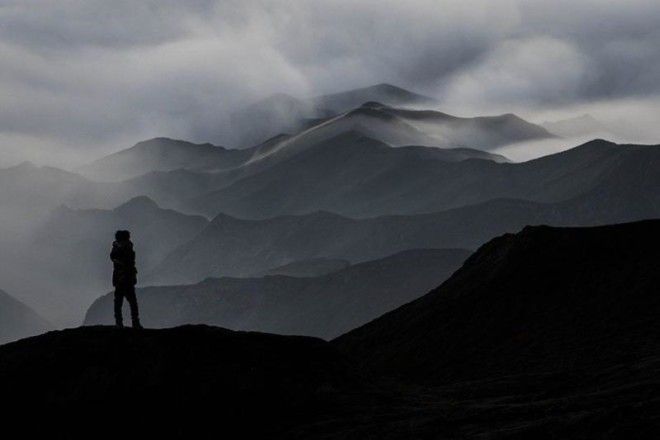
A Tenggerese worshipper stands at Mount Bromo’s ‘Sea of Sand’ during the Yadnya Kasada Festival on August 12, 2014 in Probolinggo, East Java, Indonesia.
Some rather opportunistic villagers don’t buy into the ritual, however. Instead of tossing in their possessions, these villagers actually enter the volcano in an attempt to cash in on one of the world’s most outlandish rituals of material sacrifice.
Here’s what that looks like — along with some information on the festival’s origin story — below:

Legend holds that the festival got its start in the 15th century, with the tale of Tenggerese royalty Princess Roro Anteng and her husband Jaka Seger.

The newly formed Tenggerese people flourished under their rulers. It was a bit of a different story for the couple, who could not conceive children.
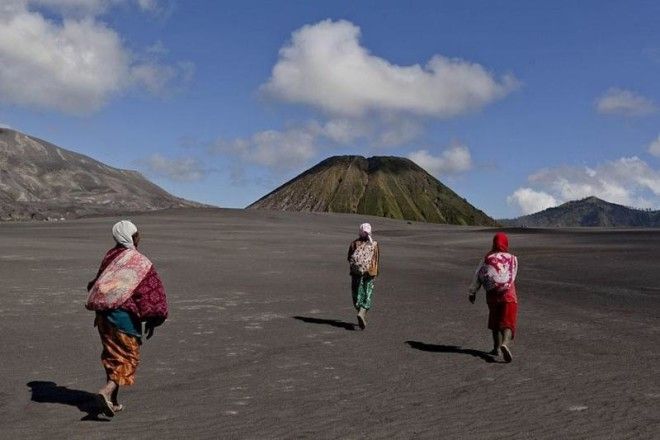
Desperate for an heir, the couple climbed atop Mount Bromo offering prayers to Ida Sang Hyang Widhi Wasa, the supreme god of Indonesian Hinduism, in hopes of having their wish fulfilled.

The god answered their prayers — under the condition that they would sacrifice their youngest child into the crater of the volcano. Anteng and Seger were blessed with 25 children, followed the god’s wish of sacrificing their youngest, Kesuma, unto the mountain god.
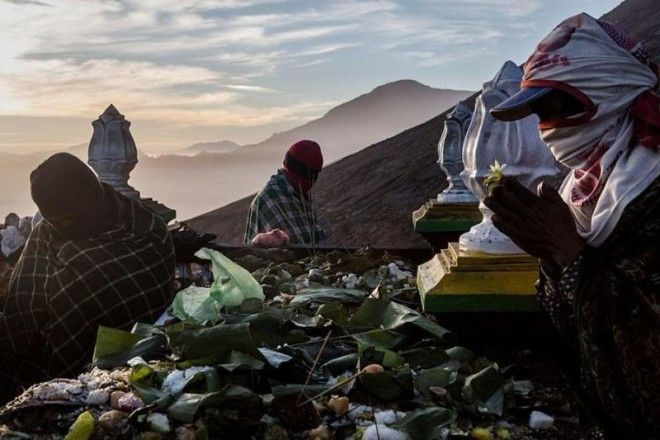
Since then, the Tenggerese people have gathered each year to pray and offer food and livestock to Hyang Widhi Wasa.
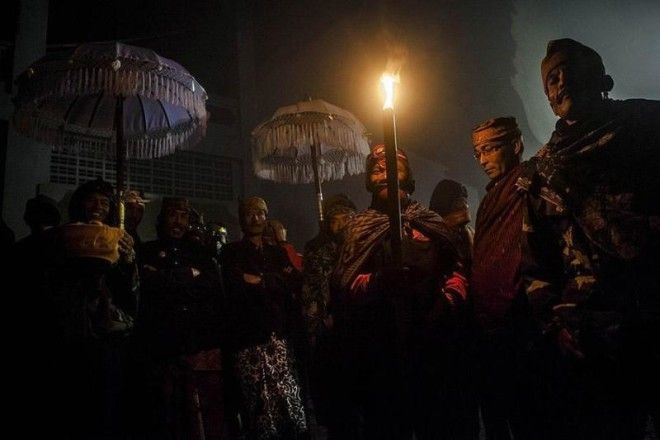
The Hindu temple of Pura Luhur Poten is where the Yadnya Kasada ceremony is organized each year.

Shamans pray at the temple.
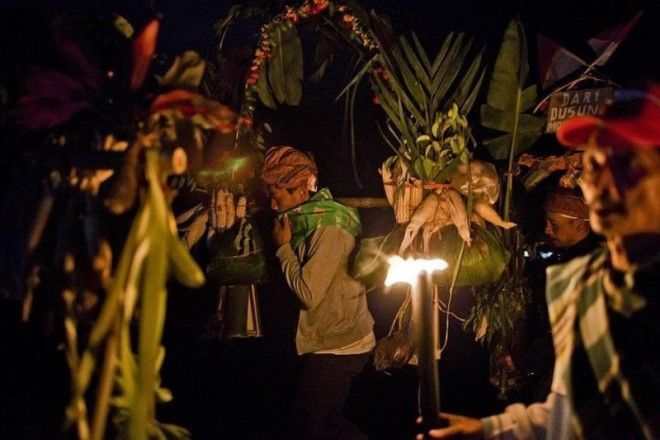
The people bring offerings based on how they make their living.
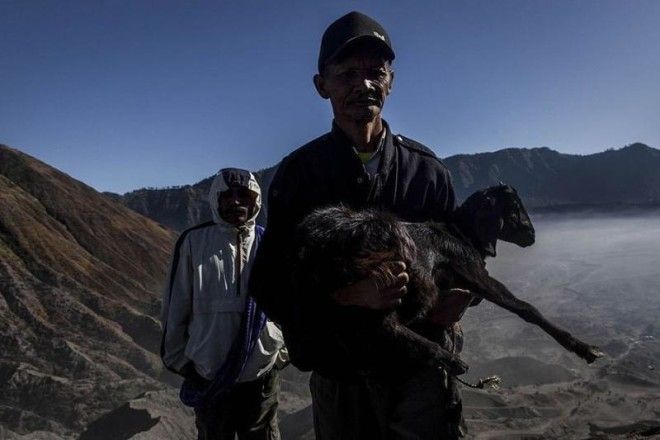
The Tenggerese are mostly either nomadic herders or agriculturists, which means that most offerings are livestock or agricultural goods.
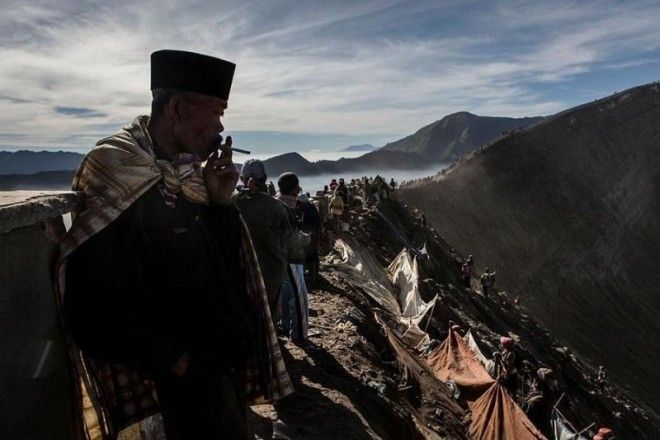
In addition to the produce and animals offered up to the Mountain God, some Tenggerese also throw money into the mouth of the volcano.
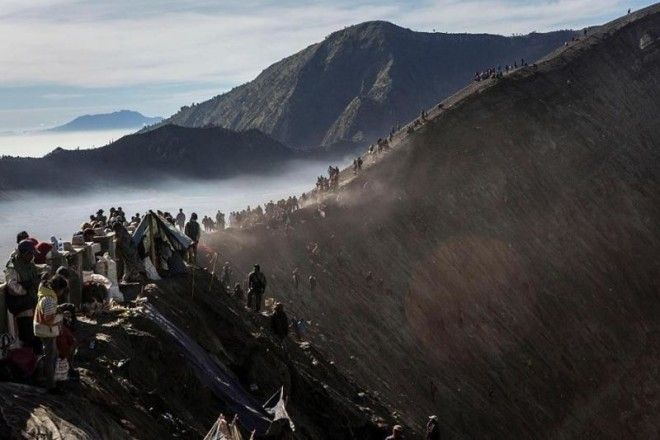
Worshipers line up along the upper ridge of Mount Bromo.

Participants also pray over the volcano before casting off their offerings.
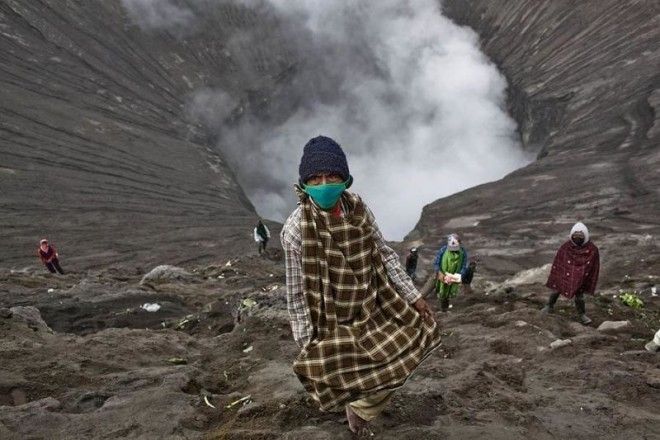
The conditions are harsh inside the volcano; many wear face masks to help filter the sulfur smell and other gasses.
Advertising

After venturing across the "sea of sand," some villagers take up their positions inside Mount Bromo in an attempt to catch the offerings thrown from above.
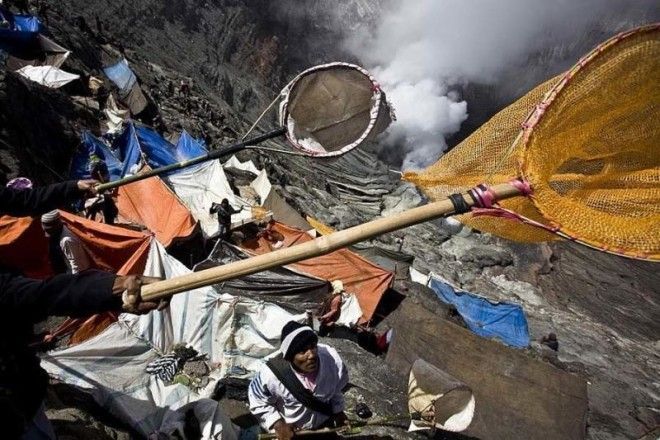
These villagers attempt to collect their share of the offerings not only for their economic value, but also because many of them believe anything they can catch will bring them good luck.
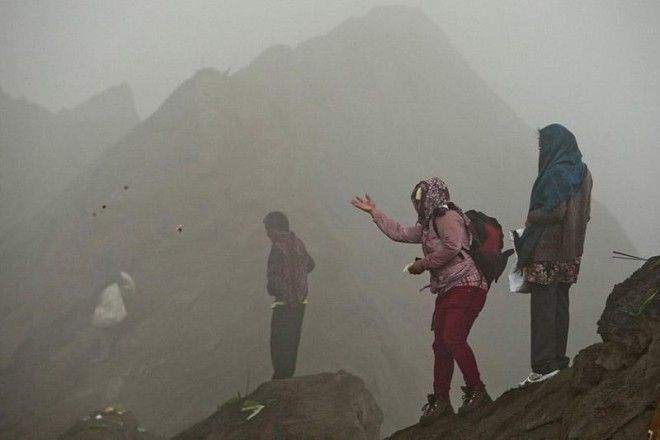
Tenggerese Hindus throw their offerings into the volcano.
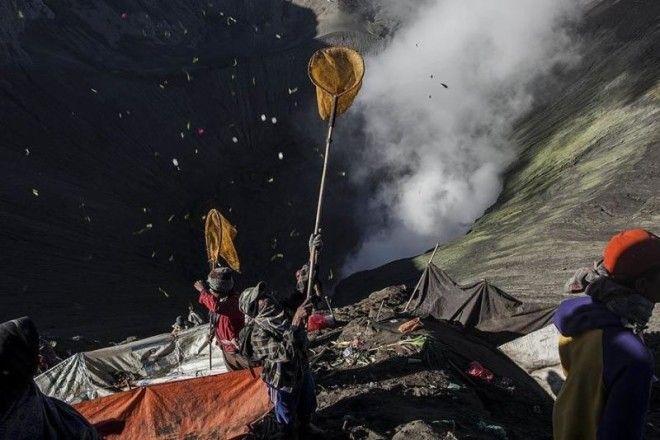
Villagers below await with their outstretched nets.

Villagers use both sarongs and nets to catch the tossed goods.

Villagers venture into the volcano at their own risk.
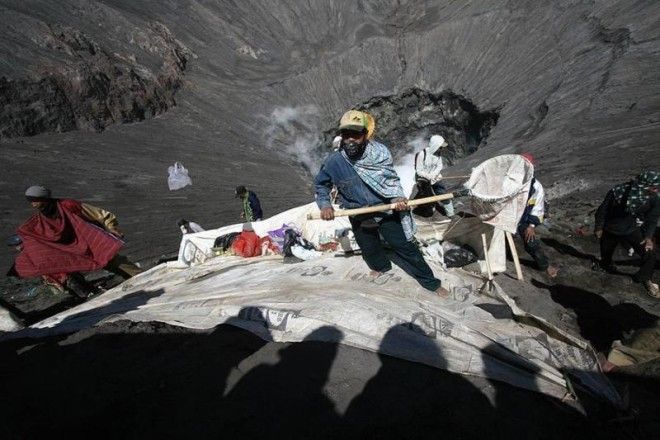
Heat, volcanic gasses, being hit by thrown objects, and falling are all risks when trying to catch the offerings from above.

The scene in the volcanic rim can be a bit chaotic, as villagers compete with one another for possessions.
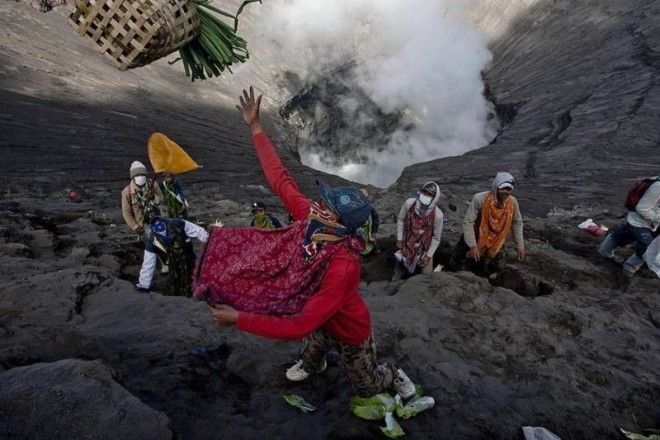
No one really knows what percentage of the offerings villagers actually intercept, and what percent ends up making it into the mouth of the volcano.

The cow is considered especially sacred, and is thus a highly valuable catch for crater-dwelling villagers.
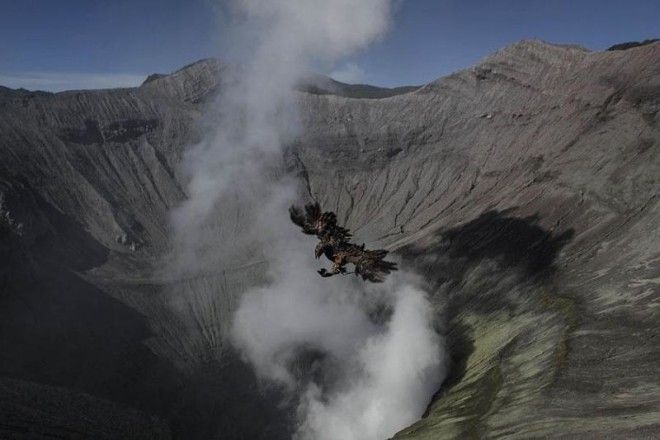
A large bird attempts to fly away after being thrown into the volcano as an offering.
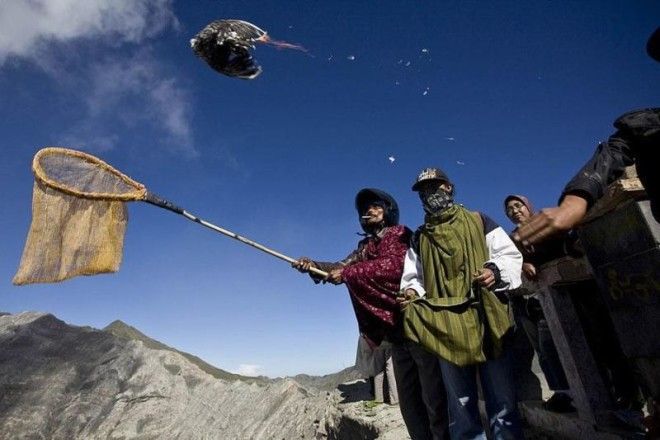
A man stretches his net out in an attempt to catch a chicken that has been thrown as an offering.

The steep interior walls of Mount Bromo make it difficult for the villagers to find a secure place for themselves and their spoils.
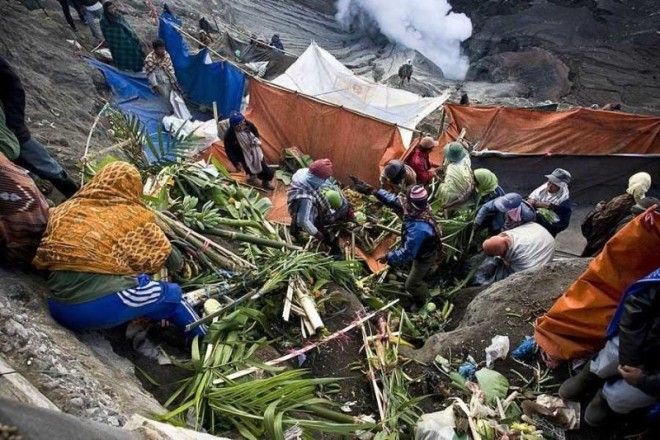
Villagers stand with the vegetables they’ve collected.
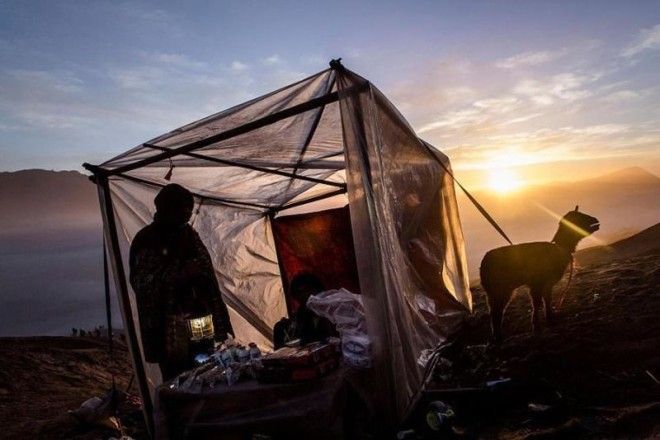
A sacrificial goat rescued by villagers is tethered to the tent of its new owner.

